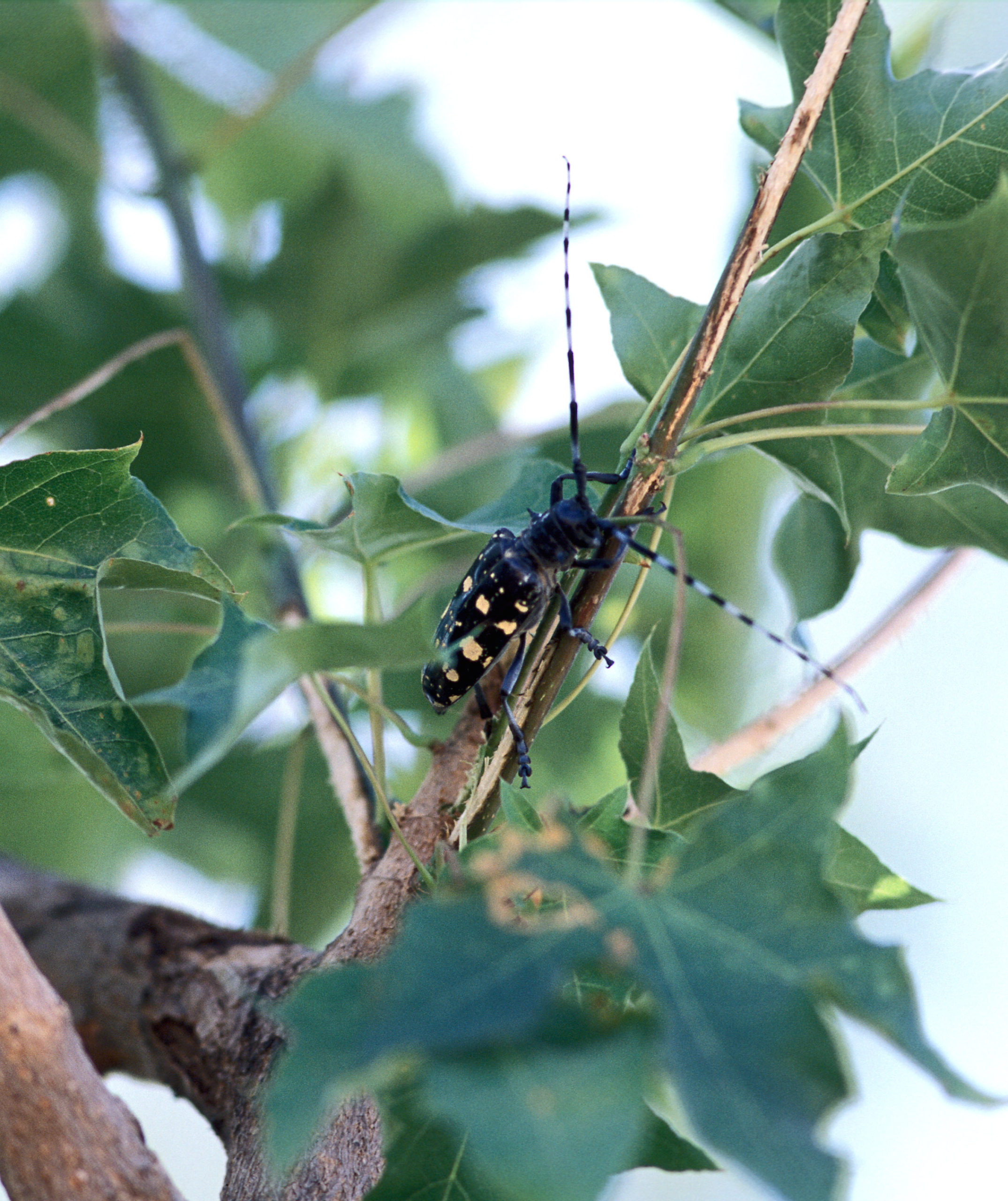
August is when adult Asian longhorned beetles emerge from trees, so the U.S. Department of Agriculture is asking Long Islanders to inspect their trees this month for this invasive pest and report if they find any so the infestation can be taken care of before it spreads.
The USDA is aiming to eradicate this tree-killing beetle from the United States and that’s why it has declared August “Tree Check Month.”
Asian longhorned beetle continues to be found on Long Island, with portions of both Nassau and Suffolk counties under a federal quarantine for the pest, and the movement of wood out of those areas is not allowed. The most recent infested trees were found this June in the Amityville area, the USDA reported.
The USDA says: Asian longhorned beetle is a wood-boring beetle that attacks 12 types of hardwood trees in North America, such as maples, elms, horse chestnuts, birches and willows. In its larval stage, the insect feeds inside tree trunks and branches during the colder months. The beetle creates tunnels as it feeds, then chews its way out as an adult in the warmer months. Infested trees do not recover and eventually die.
“We need the public’s help to find new areas where the beetle has spread, because finding it sooner means fewer trees will become infested,” said Josie Ryan, the USDA Animal and Plant Health Inspection Service national operations manager for the Asian longhorned beetle eradication program.
The beetle has distinctive markings: black and white antennae that are longer than the insect’s body, a shiny black body with white spots that is about 1 to 1.5 inches long, and six legs and feet that can appear bluish-colored.
Signs that a tree might be infested include: round exit holes in tree trunks and branches about the size of a dime or smaller, shallow oval or round scars in the bark where the adult beetle chewed an egg site, sawdust-like material called frass lying on the ground around the tree or in the branches, and dead branches or limbs falling from an otherwise healthy-looking tree.
The beetle is not harmful to people or pets. People who spot the beetle are asked to take pictures and capture suspicious insects in a durable container and freeze them, which helps preserve the insect for identification. Residents can report the insect or tree damage by calling the ALB hotline at 1-866-702-9938 or reporting online at AsianLonghornedBeetle.com.
“As people use firewood this summer, we are also asking them to buy heat-treated and certified wood rather than move untreated firewood long distances, which can potentially spread ALB,” Ms. Ryan said. “You can also responsibly gather firewood where you will burn it or buy it in the area where you will use it.”